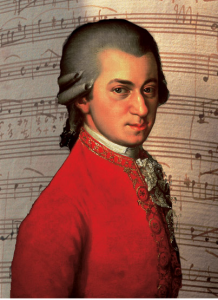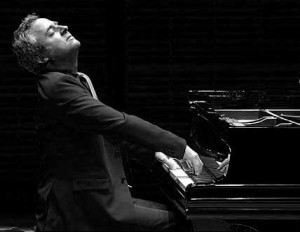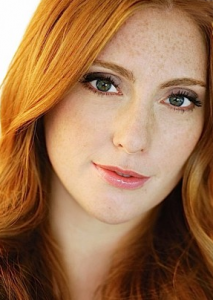 To put COC conductor Johannes Debus’ TSO conducting debut with an all Mozart program in context, I reflected on the qualities of a few conductors of Mozart’s Symphony No. 35 (Haffner). Karl Bohm leading the Berlin Philharmonic makes vivid the robust contrast of the voices introduced in the first movement; it is like a father and son dialogue, Leopold and Wolfgang, perhaps. Von Karajan, also with the Berlin Phil, is more sensual, rounds the edges of the dramatic contrasts, sounding more like a Shakespearean pastoral romance. Fritz Reiner with the Chicago Symphony brings out the orchestral richness in contrast with the silvery whisper of the winds. Neville Mariner with Academy of St. Martin in the Fields Chamber Ensemble—gives a transparent performance that just lets the music come through without a program, so it sounds like, well, Mozart–that is to say, the images that come through are reflections of scenes from his operas.
To put COC conductor Johannes Debus’ TSO conducting debut with an all Mozart program in context, I reflected on the qualities of a few conductors of Mozart’s Symphony No. 35 (Haffner). Karl Bohm leading the Berlin Philharmonic makes vivid the robust contrast of the voices introduced in the first movement; it is like a father and son dialogue, Leopold and Wolfgang, perhaps. Von Karajan, also with the Berlin Phil, is more sensual, rounds the edges of the dramatic contrasts, sounding more like a Shakespearean pastoral romance. Fritz Reiner with the Chicago Symphony brings out the orchestral richness in contrast with the silvery whisper of the winds. Neville Mariner with Academy of St. Martin in the Fields Chamber Ensemble—gives a transparent performance that just lets the music come through without a program, so it sounds like, well, Mozart–that is to say, the images that come through are reflections of scenes from his operas.
What a surprise it was to hear Maestro Debus introduce his “Haffner” with a storyline he uses to keep his conducting focused: it is the story of Mozart’s opera Don Giovanni. The principal voice of the first movement is the hero in full armour. The guiding character of the second movement, playful and full of trills and embellishments, is the coquettish peasant maid, Zerlina. The third movement imagines the ball at which the doughty Don dances the minuet with Donna Anna. Maestro Debus continues the mood of seduction into the finale which he characterizes as an “hormonal drive.” I’m not sure I followed his storyline, but his interpretation was a nice balance of flow and restraint that brought out the subtleties of the drama.
 The hero of the evening was pianist Jeremy Denk who gave an inspired performance of the “Elvira Madigan” Piano Concerto, No. 21. Denk’s spontaneous manner is infectious: even in passages where the soloist rests, his body sways and his feet dance to the orchestra. Despite the vividness of his presence, his playing is remarkable for it’s “still, small voice,” the liquid crystal tones of his upper register, the plangent harpsichord shimmer of his bass. His first movement cadenza had a mesmerizing fluency. The pulse of his phrasing seemed to guide conductor and orchestra during the heart-rending andante, and in the finale, Denk’s keyboard sparkled with the playful wit as lightly as an oboe or bassoon.
The hero of the evening was pianist Jeremy Denk who gave an inspired performance of the “Elvira Madigan” Piano Concerto, No. 21. Denk’s spontaneous manner is infectious: even in passages where the soloist rests, his body sways and his feet dance to the orchestra. Despite the vividness of his presence, his playing is remarkable for it’s “still, small voice,” the liquid crystal tones of his upper register, the plangent harpsichord shimmer of his bass. His first movement cadenza had a mesmerizing fluency. The pulse of his phrasing seemed to guide conductor and orchestra during the heart-rending andante, and in the finale, Denk’s keyboard sparkled with the playful wit as lightly as an oboe or bassoon.
 Being that this concert opens the TSO’s annual Mozart Festival, we were lucky to have a second soloist, the soprano Layla Claire, bring on Mozart’s Susanna singing in the final act of The Marriage of Figaro of the bliss she anticipates with her lover (“Giunse alfin il momento”…”At last, the moment has come). The burnished woodwind tone of Ms. Claire’s soprano is consistently thrilling, agile, and accurate as water finding it’s own level with the orchestra accompaniment. Gifted as well with striking physical beauty, she has yet to develop the charismatic generousity that brings a character totally alive on the concert stage.
Being that this concert opens the TSO’s annual Mozart Festival, we were lucky to have a second soloist, the soprano Layla Claire, bring on Mozart’s Susanna singing in the final act of The Marriage of Figaro of the bliss she anticipates with her lover (“Giunse alfin il momento”…”At last, the moment has come). The burnished woodwind tone of Ms. Claire’s soprano is consistently thrilling, agile, and accurate as water finding it’s own level with the orchestra accompaniment. Gifted as well with striking physical beauty, she has yet to develop the charismatic generousity that brings a character totally alive on the concert stage.
Radio personality Tom Allen, that most genial teller of musical anecdotes, breathed life into stories about Mozart, his librettist da ponte, and his friend, the castrato Rauzzini, and took all the stuffiness out of an evening at the symphony.
